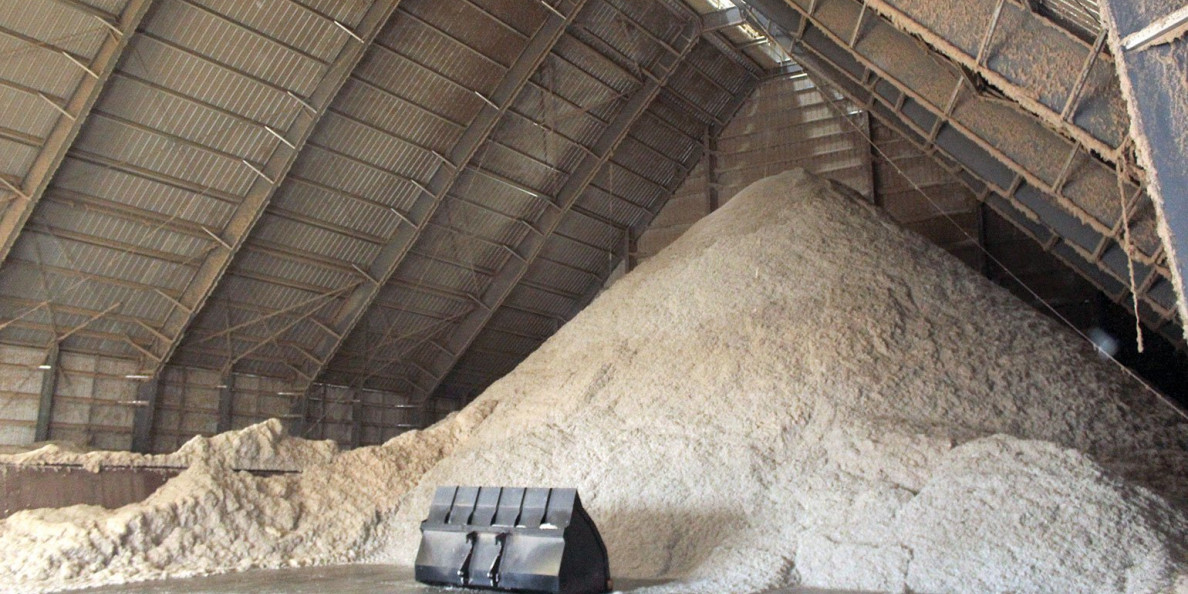Use markets for cottonseed diverse/complex
Cotton gins and cottonseed oil mills both want the same thing — uniform and good-quality seed. John Fricke, president, Planters Oil Mill in Pine Bluff, Ark., told cotton producers and ginners attending the recent Southern Cotton Ginners Association meeting in Branson, Mo., profit margins for oil mills and gins would improve if seed size were bigger and more uniform. A higher oil content in seed would also be a plus.
Fricke knows that may be a tough nut, or seed, to crack. “A higher oil content in cotton planting seed gives it more vigor to establish a stand. With the more-than-challenging weather conditions during recent planting seasons and increasing volatility in world weather patterns, improved seed vigor is becoming more essential for producers,” says Fricke.
“As an oil mill, we welcome a higher oil content in whole cottonseed, and we would even sacrifice some seed protein because a higher oil content in seed would bring more revenue to the oil mill when it comes time to sell our cottonseed oil.”
Kater Hake, vice president, Agricultural and Environmental Research at Cotton Incorporated also presented at the meeting, and stated, “…dairymen would like to have a higher oil content in the whole cottonseed they feed their dairy cows, too.”
Gossypol, which occurs naturally in a cotton plant, has for years been a factor limiting whole cottonseed’s marketability to a broader range of animals. Ten years ago, Texas A&M AgriLife Research plant biotechnologist Dr. Keertie Rathore developed a cotton variety that exhibits low levels of gossypol in its cottonseed while retaining normal levels of gossypol in the plant itself.
“I was in a recent meeting with dairymen and was told if more gossypol-free seed were available, they would increase the cottonseed rations they feed to their dairy herds,” says Fricke. “Through Keertie’s work, gossypol levels can be dropped from 7,000 parts-per-million to around 250 parts-per-million. At those levels, whole cottonseed could be consumed by single-stomached animals and not just ruminants.
Cottonseed, aquiculture, and human health
Cotton Incorporated has been conducting research to evaluate cottonseed meal’s use in aquiculture for a number of years. “That market will return as much as $1,800 to $2,000 a ton,” says Fricke. “If we can capture just part of that value, the overall value of our annual crush would increase significantly.”
The catfish industry uses a great deal of cottonseed meal because of the amino acids it contains. “Evidently, catfish can digest higher levels of gossypol much better than other types of fish,” says Fricke.
Fricke expressed excitement at the results of research funded by Cotton Incorporated and the National Cottonseed Products Association and conducted at the University of Georgia. Fifteen healthy volunteers were selected. Over a period of time, some were fed a high-fat diet of cottonseed oil and some were fed diets rich in olive oil, what many consider the gold standard of oils.
“The cholesterol levels of all participants were evaluated and results showed those subjects fed cottonseed oil diets had an 8 percent decrease in their cholesterol and a 30 percent reduction in triglycerides,” says Fricke. “They also had a 15 percent decrease in low-density lipoproteins (LDL) or what is generally referred to as ‘bad’ cholesterol that leads to cholesterol build up in arteries.”
Another study is being designed to evaluate the effect of cottonseed oil on an older representative segment of the population to measure the effect of the oil on their health. That study is scheduled to conclude in 2020.
Someone asked Fricke if consumer demand for cottonseed oil increased significantly, would there be enough to supply demand. “Probably not. There are only eight oil mills currently operating in the United States,” says Fricke. “We once were crushing up to 6 million tons of cottonseed annually. Today, we might be able to crush 2 million tons.”
Prices for whole cottonseed are determinant, to a large extent, on the availability and prices of other feeds and proteins. “Cottonseed prices were once set on what we were getting for our oil,” says Fricke. “We don’t wield that stick any longer.”


